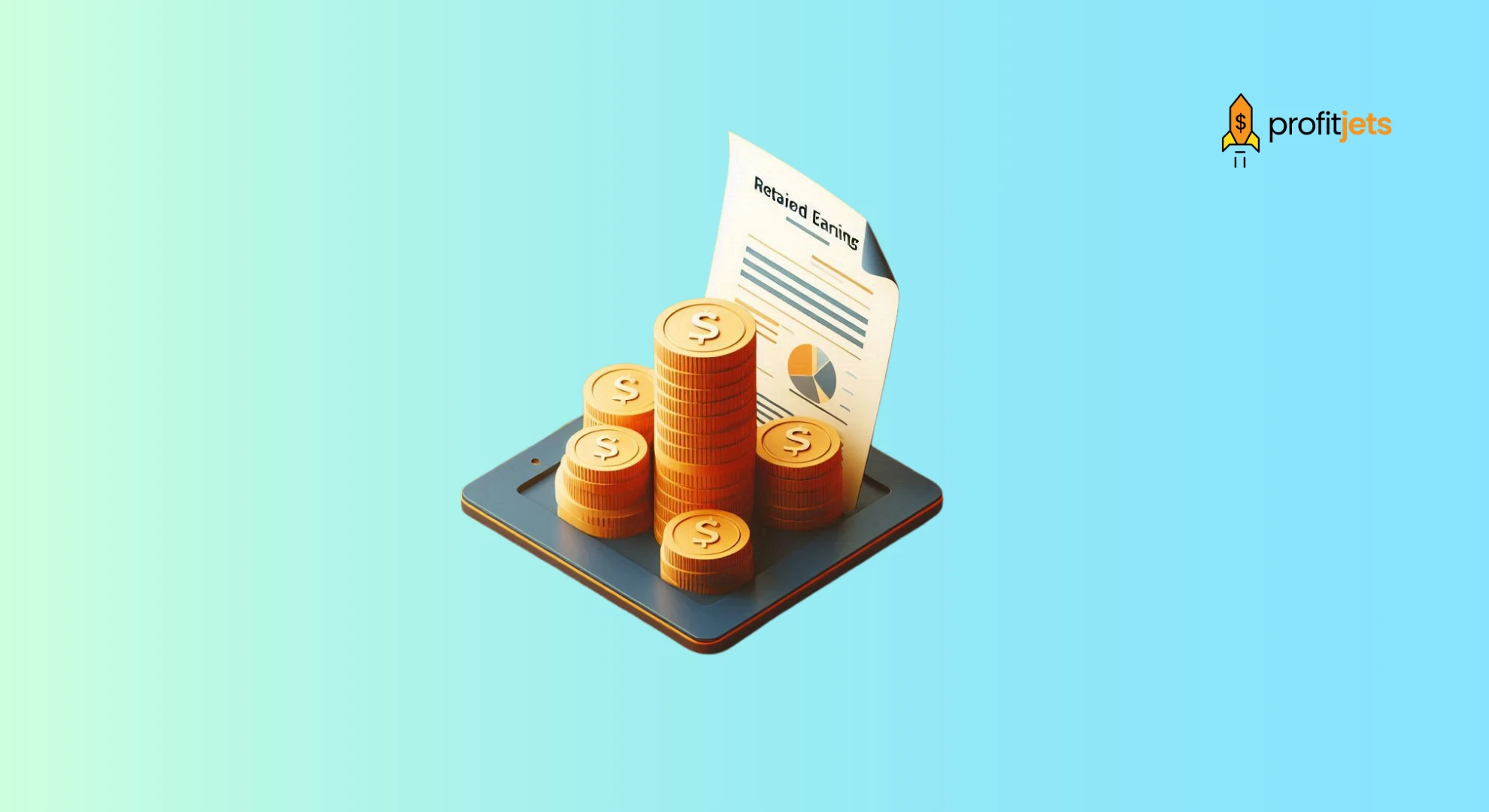If you’re running a business, understanding retained earnings is essential—not just for accountants, but for owners, founders, and decision-makers. Retained earnings reflect how much profit your business keeps after paying out dividends. It’s a key indicator of your company’s growth potential and financial health.
In this updated 2025 guide, we’ll break down what retained earnings are, how they’re calculated, where they appear on your balance sheet, and how they influence strategic financial decisions.
What Is Retained Earnings?
Retained earnings represent the cumulative net income a company has kept rather than distributed as dividends. They show the portion of profits reinvested back into the business—for expansion, paying down debt, or funding R&D.
Think of retained earnings as your business’s internal savings account for future growth.
What Goes Into Retained Earnings?
To calculate retained earnings, you consider:
- Beginning Retained Earnings
- + Net Income (or – Net Loss)
- – Dividends Paid
Retained Earnings = Beginning Retained Earnings + Net Income – Dividends
Example:
Let’s say:
- Beginning Retained Earnings = $100,000
- Net Income = $30,000
- Dividends Paid = $5,000
Then:
Retained Earnings = $100,000 + $30,000 – $5,000 = $125,000

How to Calculate Retained Earnings
If you’re unsure how to calculate retained earnings, follow this step-by-step process:
- Find your beginning retained earnings from the previous year’s balance sheet.
- Add net income for the current year (from your income statement).
- Subtract any dividends paid to shareholders.
- Update your balance sheet.
Using outsourced bookkeeping services can simplify this with monthly reporting and automated tracking.
Where to Find Retained Earnings on the Balance Sheet
What are retained earnings on a balance sheet?
Retained earnings are listed under the shareholders’ equity section on the bottom half of the balance sheet.
How to Find Retained Earnings on the Balance Sheet:
Go to your latest balance sheet and look under:
- Equity (or Owner’s Equity)
- Retained Earnings (or Accumulated Earnings)
If this section is missing or incorrect, you may need help from an outsourced bookkeeping and accounting firm for startups to clean up your records.
Is Retained Earnings a Debit or Credit?
In accounting, retained earnings is a credit balance—because it represents earned income. However, if a company has accumulated losses (negative retained earnings), it might show up as a debit.
Key Insight:
- Positive retained earnings = credit (profit retained)
- Negative retained earnings = debit (accumulated loss)
Why Retained Earnings Matter for Small Businesses
1. Growth Capital
Instead of taking out loans, you can fund new hires, marketing, or equipment with retained profits.
2. Debt Management
Healthy retained earnings can reduce reliance on credit and improve leverage ratios.
3. Valuation & Investor Confidence
Investors often look at retained earnings to assess whether you reinvest wisely or pay excessive dividends.
4. Tax Planning
Retained earnings may affect your corporate tax posture. Consider working with a CFO service or outsourced accounting team to align your tax strategy with retained profit policies.
Retained Earnings vs Net Income
| Metric | Definition | Where It’s Found |
| Net Income | Profit for a specific period | Income Statement |
| Retained Earnings | Cumulative profit kept over time | Balance Sheet |
Net income feeds into retained earnings, but they are not the same.
How Startups Use Retained Earnings
Early-stage startups often reinvest all earnings—meaning retained earnings may grow slowly at first. But tracking it helps:
- Show financial discipline to investors
- Plan for bootstrapped growth
- Forecast long-term performance
This is especially important when working with an outsourced accounting firm for startups preparing for fundraising or scaling.
Common Mistakes When Tracking Retained Earnings
- Not accounting for dividends properly
- Failing to close out net income yearly
- Incorrect journal entries
- Mixing retained earnings with operating capital
These issues can be prevented by working with reliable bookkeeping services or outsourced accounting services.
Retained Earnings and Tax Services
Your retained earnings don’t directly impact taxes—until you distribute dividends. But incorrect reporting can raise red flags with the IRS.
✅ Stay compliant by working with a tax advisor or outsourced bookkeeping service that integrates retained earnings into your broader tax planning.

Conclusion
In 2025, retained earnings continue to serve as a critical measure of your business’s financial health and reinvestment strategy. Understanding what retained earnings are, how to calculate them, and how they appear on your balance sheet can empower smarter decisions, from expansion to investor relations.
Whether you’re preparing for funding, optimizing your tax position, or simply planning for growth—don’t underestimate the power of retained profits.
FAQs on Retained Earnings
1. Can retained earnings be negative?
Yes. If a business has net losses or pays out more in dividends than it earns, retained earnings can be negative (also called an accumulated deficit).
2. How often should retained earnings be updated?
Typically, at the end of every fiscal year, but monthly or quarterly updates are recommended if you’re scaling rapidly.
3. Are retained earnings taxable?
No. Retained earnings are post-tax profits. However, dividend distributions from them are taxable to recipients.
4. Can retained earnings be used to pay salaries or expenses?
Indirectly, yes. Retained earnings increase cash or assets, which can then fund salaries or expenses.
5. Should freelancers or solo entrepreneurs track retained earnings?
It’s less relevant unless incorporated. However, understanding profit retention helps guide decisions about reinvestment and growth.










